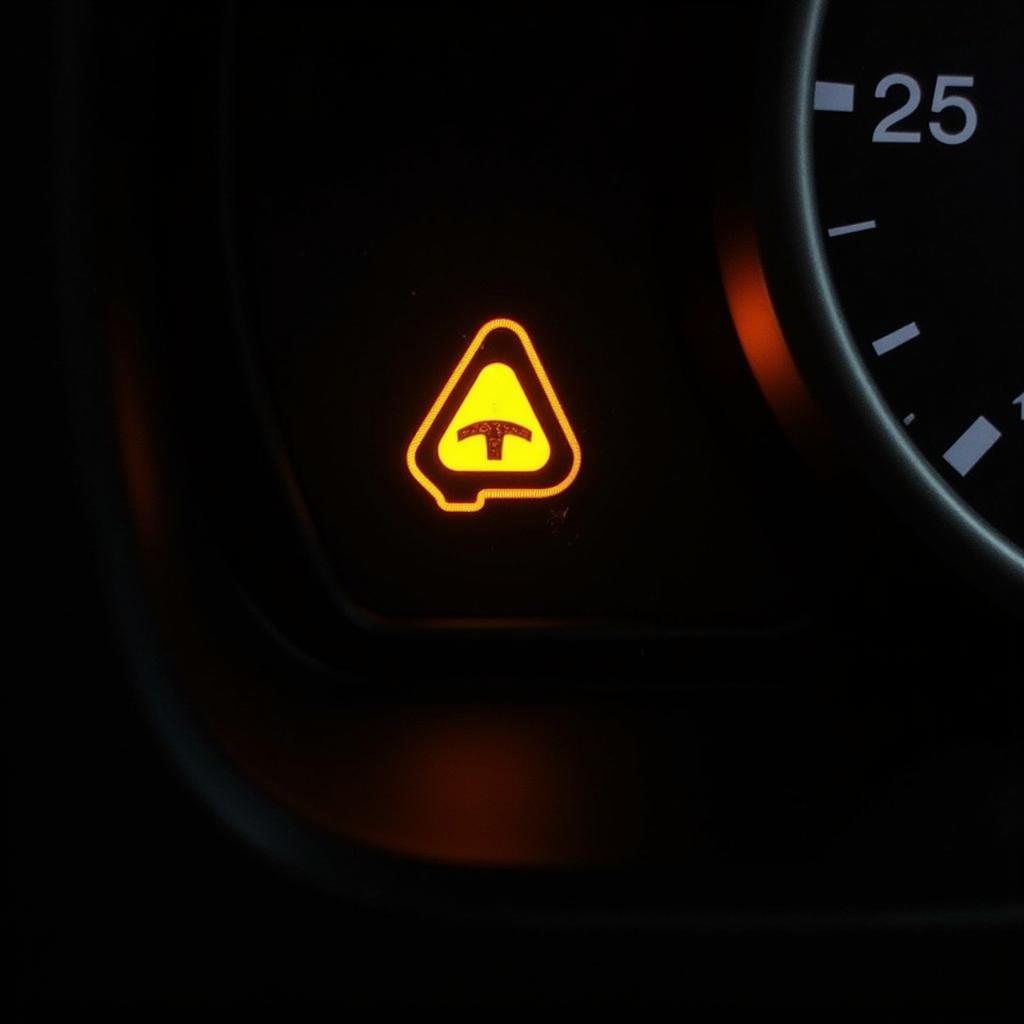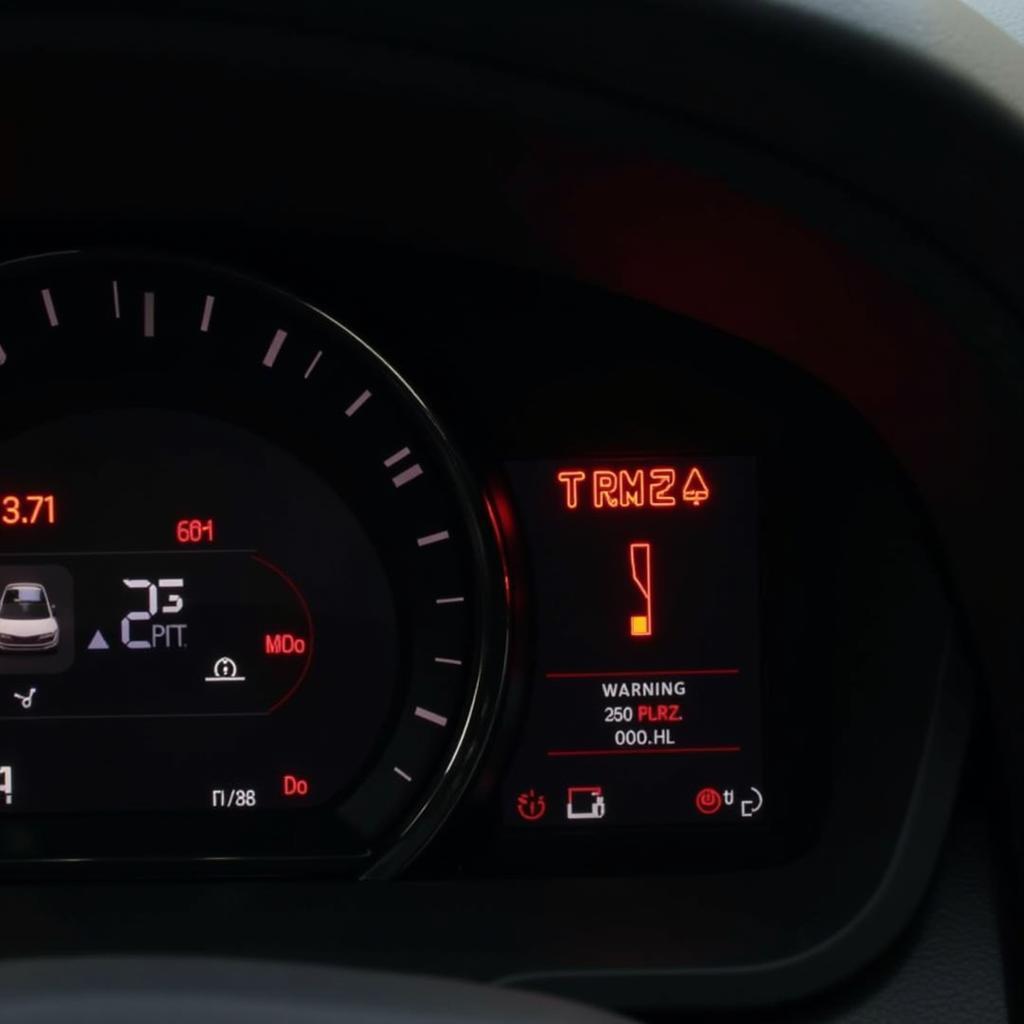The Seat Leon 2017 is a marvel of modern engineering, but even the most reliable cars can have their hiccups. One of the most common ways your Leon communicates potential issues is through its dashboard warning lights. These illuminated symbols might seem cryptic at first, but they’re actually your car’s way of saying, “Hey, let’s take a look at this.” Understanding these warning lights is key to addressing minor problems before they escalate into major repairs.
Decoding the Dashboard: Common Seat Leon 2017 Warning Lights
Your Leon’s dashboard is home to a variety of warning lights, each with its own unique meaning. While some lights indicate minor issues, others signal serious problems that require immediate attention. Let’s break down the most frequent ones:
Engine Management Light:
This usually appears as a yellow outline of an engine. It’s a general indicator of a problem within your engine management system. This could range from a faulty sensor to a more serious issue like a misfire.
What to do: If the light is steady, it’s generally safe to continue driving for a short period. However, it’s crucial to schedule an inspection with a qualified mechanic as soon as possible. A flashing light, on the other hand, indicates a severe problem, and you should pull over and seek immediate assistance.
 Seat Leon Engine Management Light
Seat Leon Engine Management Light
Electronic Stability Control (ESC) Light:
Appearing as a car with skid marks, this light signals an issue with your Leon’s stability control system, which helps maintain traction and prevent skidding.
What to do: While the car may still be drivable, proceed with caution, especially on slippery surfaces. Have the system checked by a mechanic to diagnose the cause of the malfunction.
Tire Pressure Monitoring System (TPMS) Light:
This light, resembling an exclamation mark within a tire-shaped outline, warns of underinflation in one or more tires.
What to do: Check the pressure in all tires as soon as possible and inflate them to the recommended levels found in your owner’s manual. A consistently illuminated light may indicate a faulty TPMS sensor.
 Tire Pressure Warning Light on a Seat Leon
Tire Pressure Warning Light on a Seat Leon
Airbag Warning Light:
This light depicts a seated figure with a deployed airbag. It indicates a potential issue with your Leon’s airbag system, which could prevent it from deploying in an accident.
What to do: Given the airbag’s critical safety role, any issues warrant immediate attention. Avoid driving and have your vehicle towed to a qualified technician for diagnosis and repair.
Brake System Warning Light:
This alarming light, typically an exclamation mark within a circle, signifies a problem with your braking system.
What to do: This light often signals low brake fluid, but it could also indicate a more serious issue. Pull over immediately and check your brake fluid level. If the light persists or you notice any braking irregularities, do not continue driving and seek immediate assistance.
Going Beyond the Basics: Advanced Diagnostics for Complex Issues
While understanding common warning lights is a good starting point, some issues may require a deeper dive. That’s where remote diagnostics and software solutions come in.
" Modern vehicles are increasingly reliant on sophisticated software. Remote diagnostics allow us to analyze your Leon's system in real-time, pinpoint the root cause of the issue, and even upload software updates or patches remotely to fix certain problems." - **Mark Johnson, Senior Automotive Electrical Engineer** This advanced approach can be particularly helpful for:
- Intermittent Problems: These can be challenging to diagnose traditionally, as the fault may not be present when physically inspected. Remote diagnostics can monitor the system over time, capturing data even when the warning light isn’t actively on.
- Software-Related Issues: As cars become more technologically advanced, software glitches can arise. Remote programming allows for quick and efficient software updates or resets without the need for a physical visit.
- Complex Electrical Faults: Modern cars have intricate electrical systems. Remote diagnostics can help identify faulty sensors, wiring issues, or other electrical problems that might be difficult to diagnose otherwise.
Staying Ahead of the Curve: Proactive Maintenance for a Healthy Leon
While understanding warning lights is important, proactive maintenance is your best defense against unexpected issues. Regular servicing by a qualified technician, following the recommended maintenance schedule in your owner’s manual, and addressing any unusual noises or performance changes promptly can help prevent many problems before they even trigger a warning light.
By understanding your Seat Leon’s warning lights and embracing proactive maintenance, you can enjoy many miles of worry-free driving. Remember, those lights are there to help you, not to alarm you.


